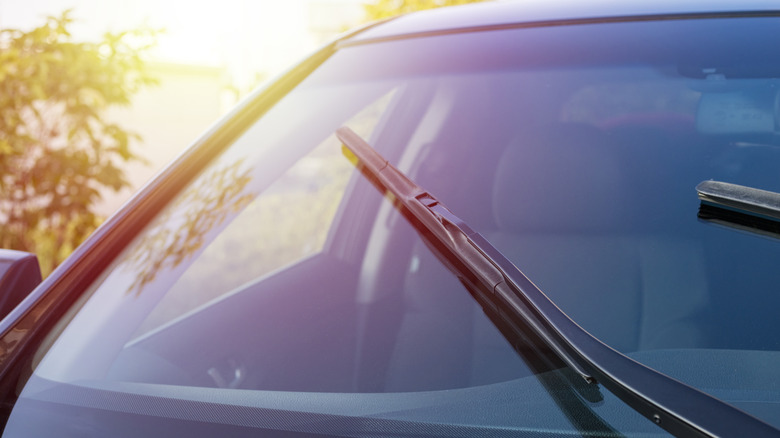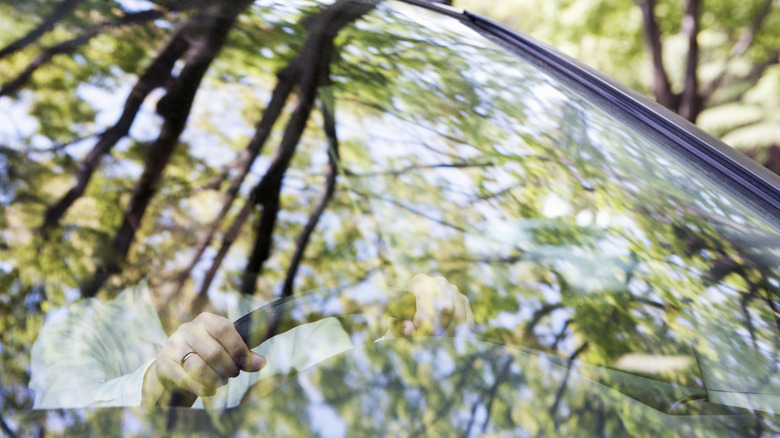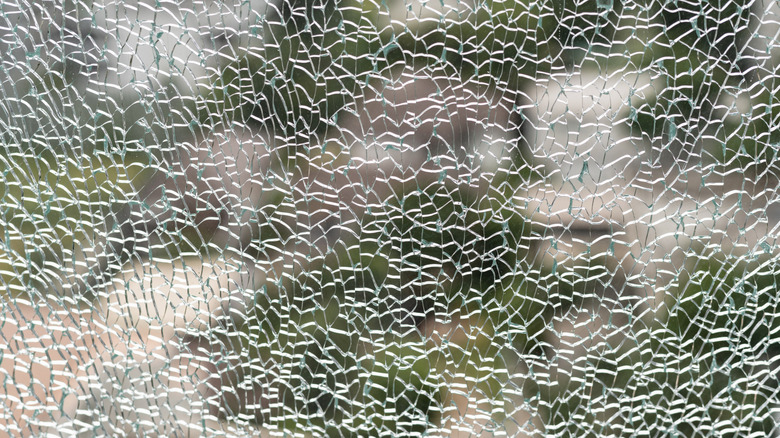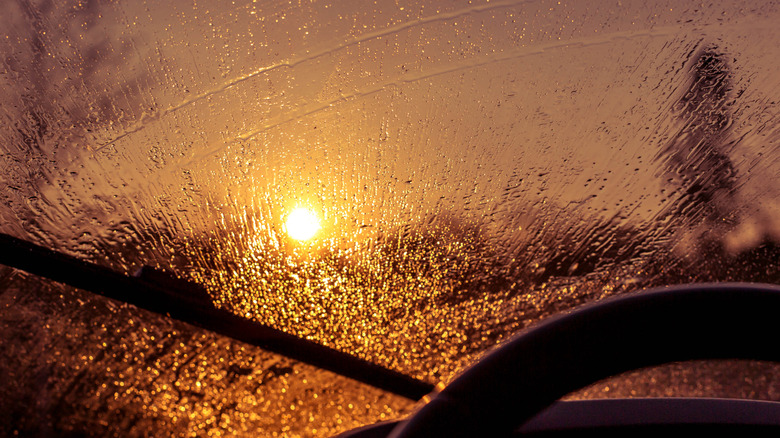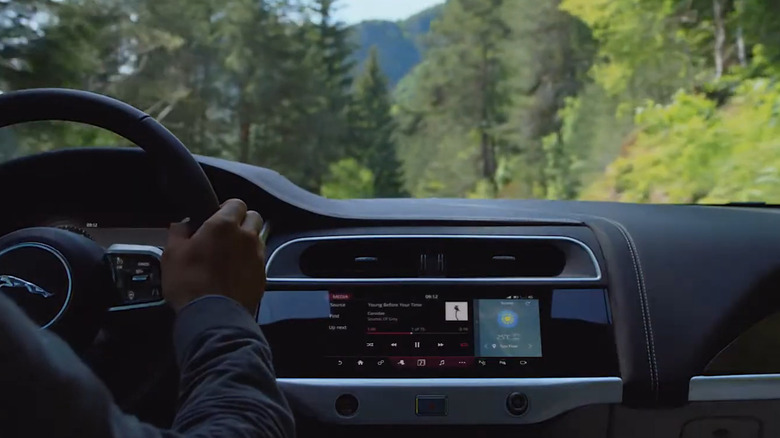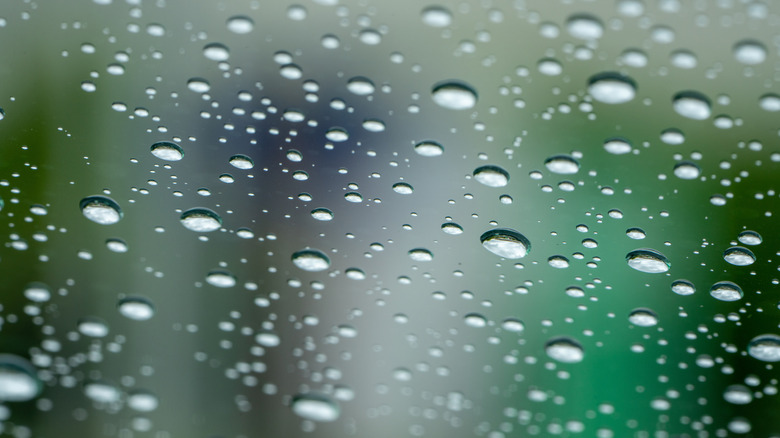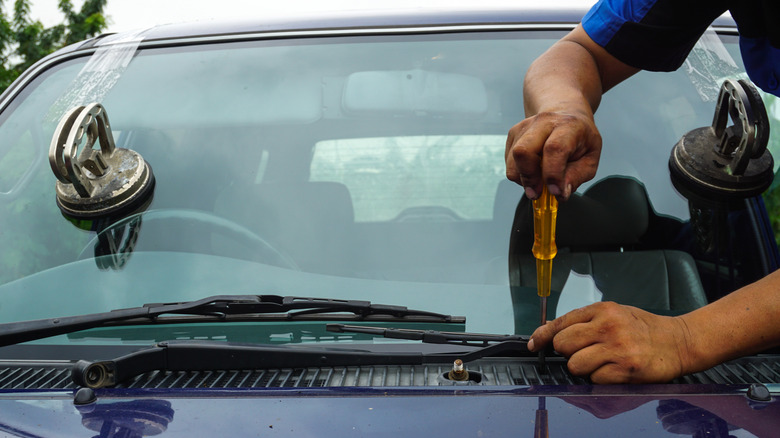6 Types Of Car Windshields Explained (And When To Consider Upgrading)
For many, car windshields are simply sheets of glass, easy to take for granted. However, anyone with a knowledge of cars understands how invaluable these components are. From helping you see the road ahead to deflecting debris and natural elements to protecting your body from dangerous impacts in case of an accident, the role windshields play in any car is undeniable. But even beyond these purposes, windshields can fulfill a host of needs depending on the kind of glass you install.
The untrained eye may believe that there's no difference between windshields other than the intensity of their tint (which strict states crack down on while others don't seem to care). But digging a little deeper reveals that there's more variety to them than you might think. Knowing the glass types available won't only give you a greater understanding of the options, but may also get you thinking about upgrading your own windshield.
Each glass variety comes with its own perks and drawbacks, so it's up to you to understand your needs and limitations before making a change. Even if information from automakers about the specific windshield glass they use is scarce, you'll readily find information about glass varieties and who can best benefit from them through various windshield replacement companies. With that said, here are six types of windshield glass varieties and who they're best for.
Laminated glass
Chances are your car's windshield is made of laminated glass. Most modern cars use this glass variety for good reason, as it's a well-rounded option that suits a universal set of needs. The windshield is constructed by fusing a sheet of polyvinyl butyral between two layers of glass.
The benefits of using laminated windshield glass are extensive. Its lightweight construction puts less strain on cars, making it a great option for someone seeking to increase fuel efficiency. At the same time, thanks to its layered build, laminated glass is strong enough to withstand most impacts. While laminated windshields are still prone to cracks and chips — on which you can do DIY repairs – their durability makes them less prone to shattering than other kinds of glass.
As you can imagine, this level of quality doesn't come cheap. If you need to replace your windshield, it'll cost $200 to $500 on average, although it can get into the thousands depending on the car it's being installed in.
Tempered glass
If your windshield should shatter, along with the expense involved in replacing it comes the danger that results from being in contact with broken pieces of glass. This is a problem tempered glass is better at dealing with than laminated glass.
Tempered glass is created through a process that sees the glass heated up to 1,100 or 1,200 degrees and quickly cooled down, giving the outer layer enhanced durability. Tempered glass is typically four to five times stronger than regular glass. If it shatters, the glass breaks into round pebble-shaped pieces as opposed to the sharper-edged pieces of regular glass. Your chance of getting injured when touching these pieces are greatly reduced as a result. It's possible it could be a good pick if your car typically has to go through rough conditions and you fear serious damage to the windshield.
Despite this, it's rare to see this glass type used on front windshields — it's far more commonly used on rear windshields or car windows. That's because once shattered, there's no way to repair tempered glass, whereas other types can have cracks or chips be fixed before they get worse. So you'd have to replace the entire windshield should something go wrong.
Solar-coated glass
Many of the same qualities that make the sun an essential energy vessel for all living beings also make it a detriment to vehicles. The sun's heat can increase the cabin temperature to an uncomfortable degree, while its ultraviolet rays can damage a car's exterior and exterior over time (though there are ways to prevent your car's dashboard from cracking in the sun). If you live where the sun is especially brutal, it may be worth investing in a solar-coated-glass windshield.
Sometimes also called infrared-reflective glass, this material is made to reflect most of the heat and UV rays that would otherwise enter your vehicle. Easily recognized by its purple coloration, it's made of layers of metal oxide that reflect UV and heat. This helps minimize the amount of heat your car absorbs, making it more comfortable to ride in without blasting the air conditioning. As a result, you're also helping your car in the long run by putting less strain on its system and maximizing its fuel efficiency.
While this is a great choice for those living in sunny or hot climates, those outside of such environments likely won't get much out it they can't get with laminated glass. Due to the specialized nature of this glass type, you can expect it to cost more than a regular windshield.
Heated glass
On the other end of the climate spectrum, those living in colder areas are likely to yearn for as much sunlight as possible. A windshield caked in ice or snow can block the light and make it impossible to see. One solution to this problem is a heated windshield, made of a special glass fitted with thin tungsten wires inside.
This electric component activates with the push of a button located on your dashboard and lets the glass raise its temperature above freezing. This prevents the buildup of ice and condensation, increasing road visibility. It also helps save time as you don't have to run the heater or defroster before heading out in the morning. If you're bothered by excessive noise, a heated windshield is also ideal, as it's far quieter than your car's heater.
The biggest drawback to these is when it comes to repairs. While heated glass is relatively hardy, any damage that does come to it can become a bigger problem rapidly, as the cold air mixing with the internal heating components will amp up the glass' stress levels. Due to the increased damage and delicate nature of the wiring, repairs can be more expensive than with typical windshields.
Acoustic glass
Driving can be stressful enough depending on your commuting route. Along with protecting you from the physical dangers that come with driving, your car should also be a space that keeps you safe from mental stressors, letting you better focus on the road. Acoustic glass is made up of thicker silicone that absorbs excess noise, making it perfect for those who like a nice, quiet ride.
Those who commonly drive through big cities, construction zones, airports, or similarly loud environments can most benefit from this windshield type. For some, minimizing such sounds can help increase their focus and keep them calmer on the road. The extra layers come with added benefits as well. Due to the thickness of acoustic glass, these windshields are generally more durable, able to withstand impacts from accidents or break-ins much better than other varieties.
Of course, there are some who this glass type may not benefit. While it can benefit those looking to block out distractions, it can also be a detriment to people who want to be aware of their surroundings. And like most other specialized types of glass, getting it repaired or replaced can be costly.
Water-repellent glass
For practically as long as automobiles have been around, rain has been one of drivers' greatest enemies. You can end up hydroplaning — here's what to do if it happens to you — and rain can also increase the difficulty of seeing through your windshield. While you can use rain-repellent spray to cut down on water droplets, it may be more worthwhile for those living in areas that experience frequent heavy downpours to invest in windshield glass that can take on the rain.
A water-repellent windshield, as its name implies, is made of glass coated with a silica compound that makes rain drops bead up and more easily roll off of the windshield. It can also prove helpful against other materials such as dirt and even light snowfall and ice. This helps keep the road visible without the need for bottles of water-repellent spray or over-exerting your windshield wipers, saving you on expensive repairs or additional purchases in the long run. It can prove especially useful if you drive at night in the rain, as water on glass in the dark can add especially bad levels of glare to your windshield.
Again, be sure this is something you truly need before investing. Otherwise, for those living in areas with light or moderate rainfall, a rain-repellent windshield cleaner may be a more sensical choice.
When should you upgrade your windshield glass?
So now that you know what windshield glass options are available, the question becomes when the right time is to make an upgrade. Sure, maybe you realized that there's a type of windshield glass better suited for your lifestyle and preferences, but is that alone enough to justify the time and expense it takes to make such a drastic change?
If your windshield glass isn't giving you any major problems, there's no need to rush and change it. Minor battering such as chips and small cracks aren't necessarily signs that your windshield needs an immediate replacement. The longer your windshield is in use, the more it is to encounter this kind of damage, similar to how your tires naturally lose air over time. So long as notice these issues right away, get them repaired, and practice regular windshield maintenance, your original windshield glass should serve you well for the road ahead.
An upgrade is in order when the condition of your windshield glass is compromising your car's performance — and your safety. If the damage to your windshield is severe enough that it continues to spread, makes it difficult to see the road, or lets in water, then a full-on replacement will be in order. Take this time to talk with a professional and let them help you assess whether it's worth changing to a different type of glass.
